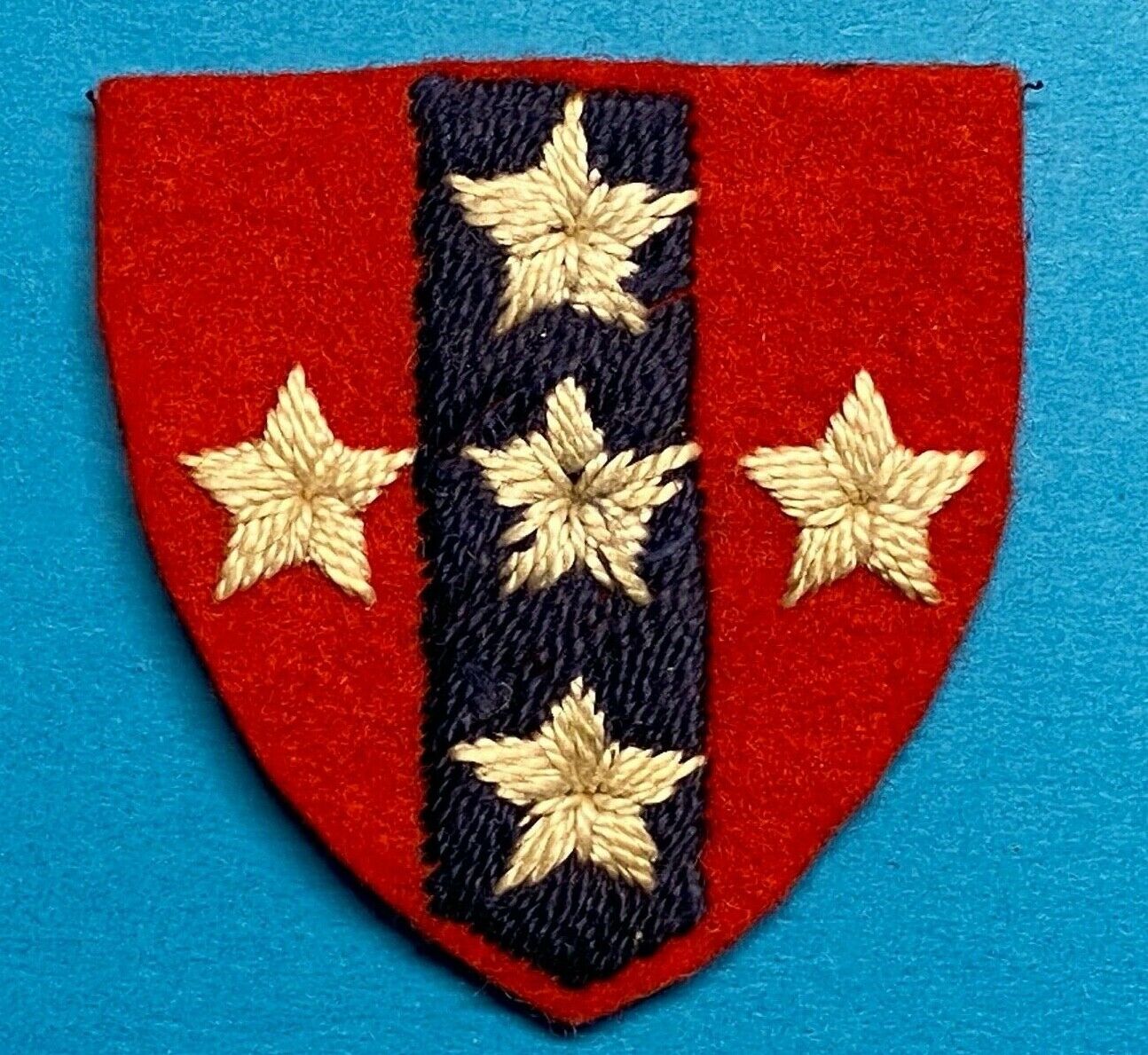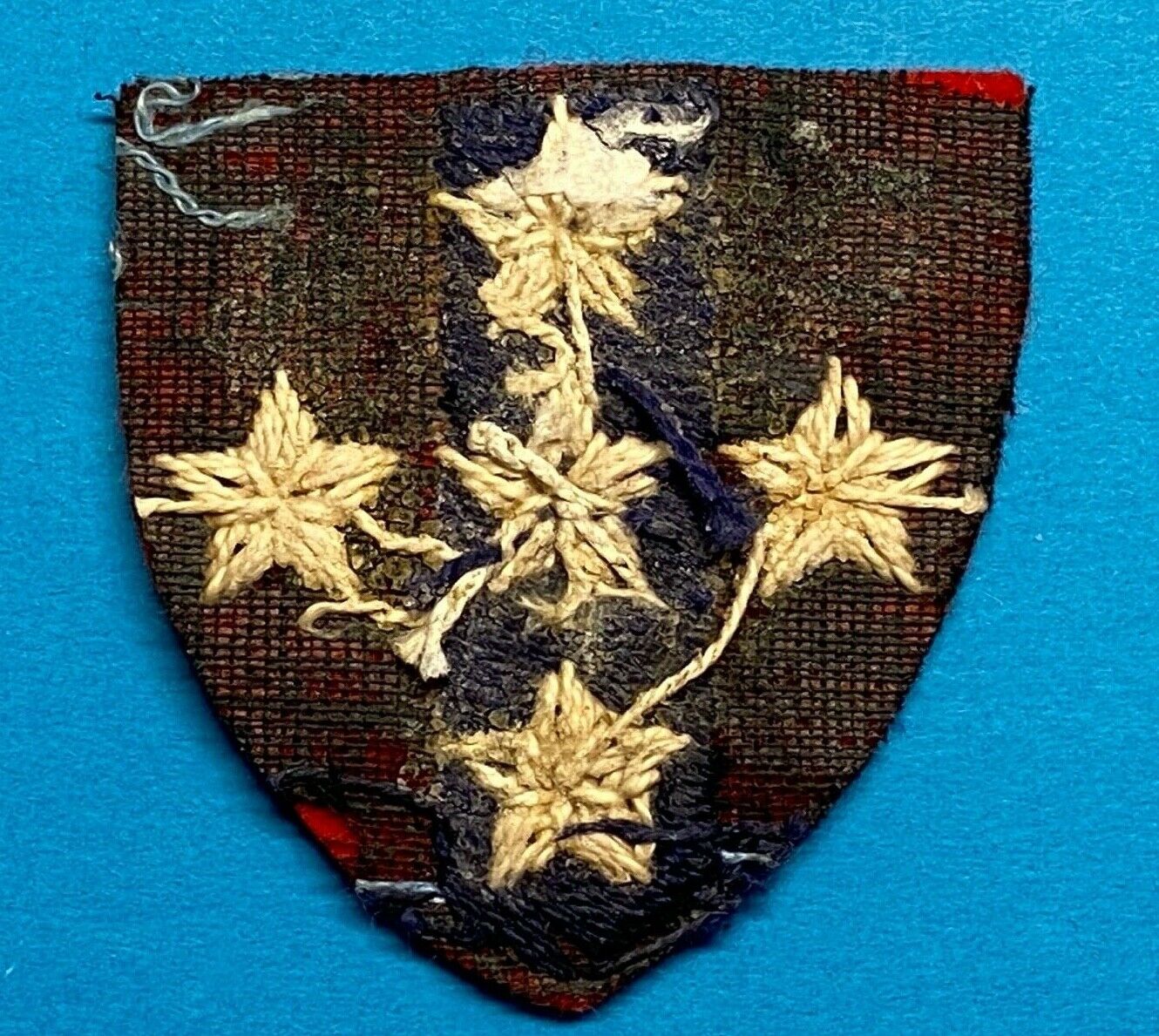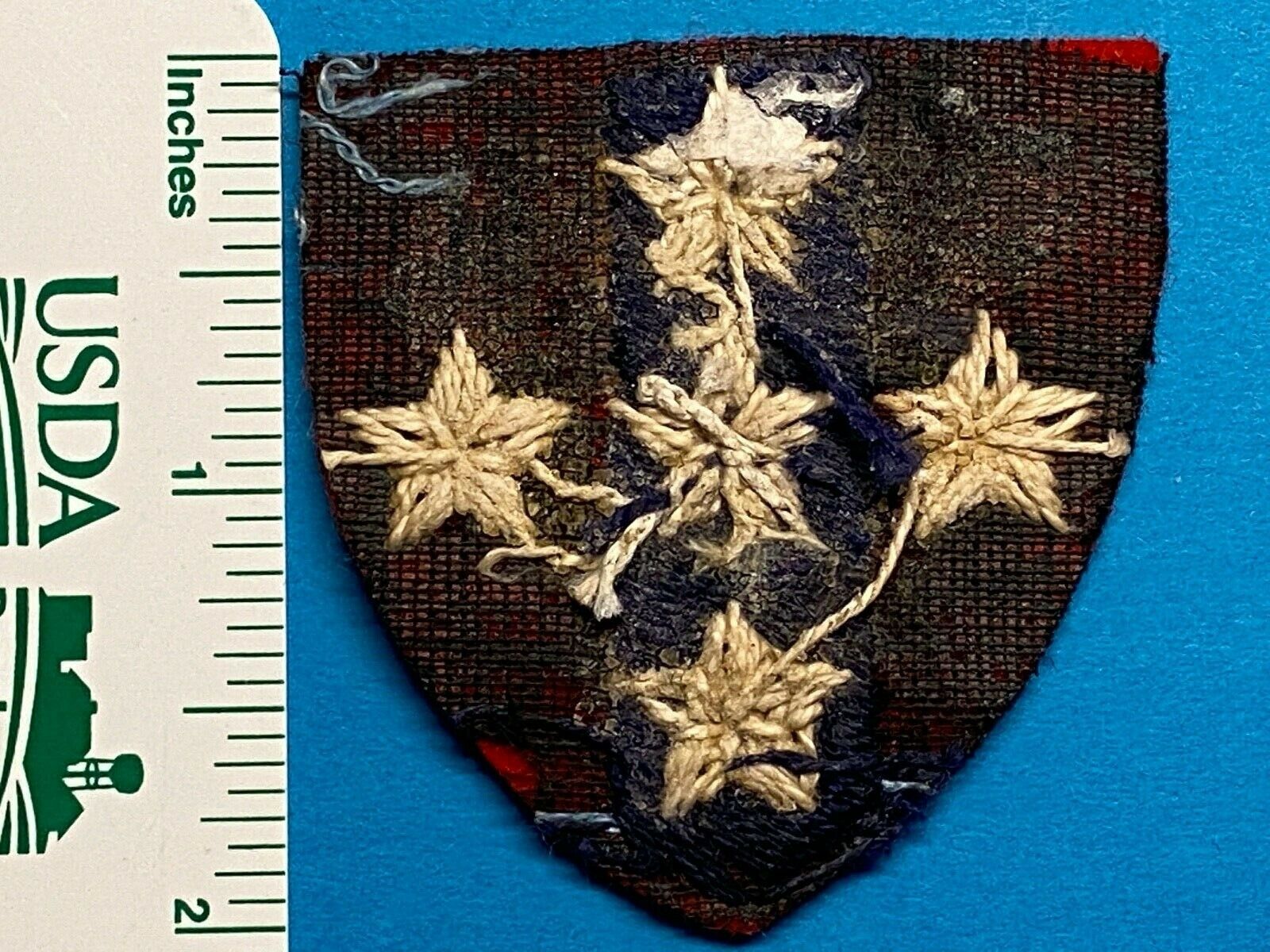-40%
WWII BRITISH, BADGE, SOUTHERN COMMAND, ROYAL ARMY ORDNANCE CORPS (RAOC), PATCH
$ 7.91
- Description
- Size Guide
Description
WWII BRITISH, BADGE, HIGHER FORMATION, SOUTHERN COMMAND (UK) - ROYAL ARMY ORDNANCE CORPS (RAOC), 1st PATTERNA red shield, dark blue center strip, with five white stars in the form of a cross. The stars are a representation of the 'Southern Cross'. The coloring of the shield, and the stars, varied according to the arm of service of the wearer. This is the first pattern of the RAOC badge, worn when the arm of service color was a blue strip. The flash was changed to red-blue-red in December 1941. This patch does not react to ultra violet light.
Cloth insignia have been in use in the British Army in one form or another for a considerable time. At least one type of insignia can be said to have had its beginnings as far back as 1900. In that year the first form of regulated colored shoulder titles was introduced to be worn on the then new form of British Army khaki-colored Service Dress and on the greatcoat. The use of these shoulder titles, which displayed the name of the wearer's regiment, corps or department, was short-lived, however, for in 1907 they were replaced by metal shoulder titles worn at the base of the shoulder-straps (but that's another subject altogether). Skill-at-arms and other such badges have their origins as far back as the mid 1800s. Cloth insignia of the type referred to as `formation' or 'divisional' signs were introduced during the First World War, and although their use was discontinued after the war, they were officially re-introduced in 1940 and their use and numbers reached their zenith during the remaining years of the Second World War. During the late 1960s the Army authorities withdrew the ubiquitous Battle Dress and introduced a new form of khaki Service Dress for wear by the rank and file throughout the British Army. The opportunity was taken to do away with many of the existing colored insignia. Shoulder titles, referred to as regi-mental (or corps) designations, formation signs, regimental colored flashes, arm-of-service strips, all were swept away. Only rank, trade, proficiency and skill-at-arms badges plus a few select items remained, and most of these were colorless. Only recently, with the introduction of the `woolley pully' - the knitted woolen pullover, D.P.M. clothing (Disruptive Pattern Material - camouflaged material) and the use of detachable brassards, have some shoulder titles and colored signs re-appeared, although in very limited numbers.











